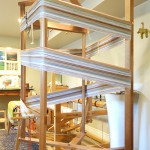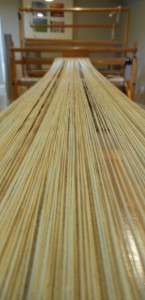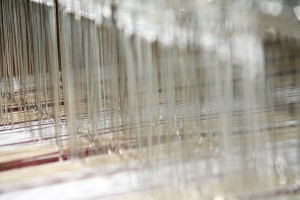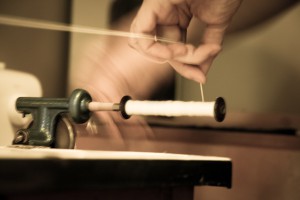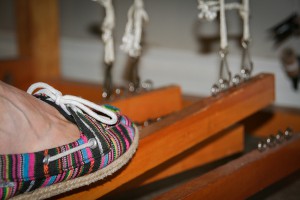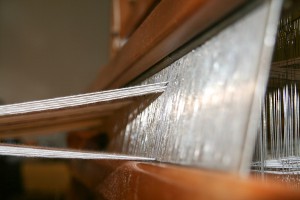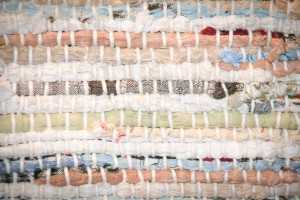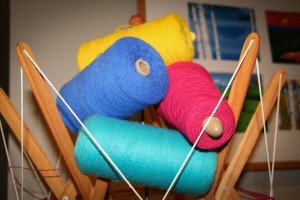 Planning the Project. The choice of fibre, colour, pattern and weave factors into many calculations required in the beginning. Your equipment set-up also determines what you can weave. Details such as the length, width, shrinkage, draw-in, the sett, number of ends and picks per inch are used to calculate how many yards of fibre you need. Samples are a good idea.
Planning the Project. The choice of fibre, colour, pattern and weave factors into many calculations required in the beginning. Your equipment set-up also determines what you can weave. Details such as the length, width, shrinkage, draw-in, the sett, number of ends and picks per inch are used to calculate how many yards of fibre you need. Samples are a good idea.
Winding the Warp. The warp (vertical) threads are measured out in length and number and placed in order by winding them in a figure-eight on a warping reel.
Dressing the Loom consists of Beaming the Warp, Threading the Heddles, Sleying the Reed and Tying On. The warp is spread out to the desired width, attached to the back beam and the entire length is rolled on under tension. Individual warp ends are threaded through the heddles and the reed (600 ends is not uncommon) and tied on to the front beam.
Weaving. The weft (horizontal threads) is wound onto bobbins and placed in the shuttle. The sequence is treadled as the pattern calls for. The weaver opens the shed, throws a shot of weft, closes the shed and beats the weft down. After a few inches of weaving, the warp is advanced and continues.
Finishing. Hanging ends are trimmed and darned, hems are hand- or or machine-stitched or knotted with decorative fringes. These are finishing techniques, but most importantly, finishing refers to washing the new fibre to set the weave in place and bring out the natural state of the fabric.
